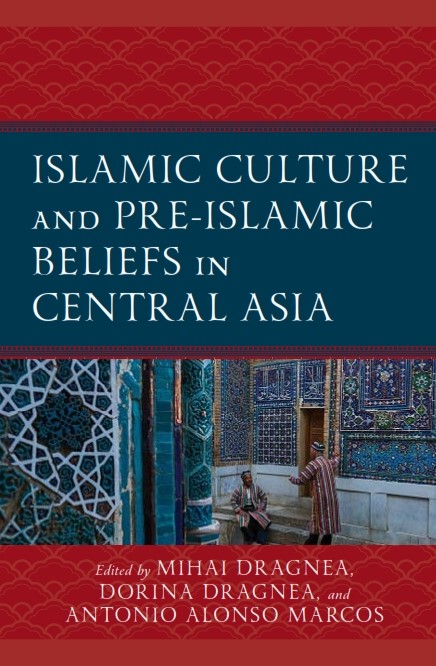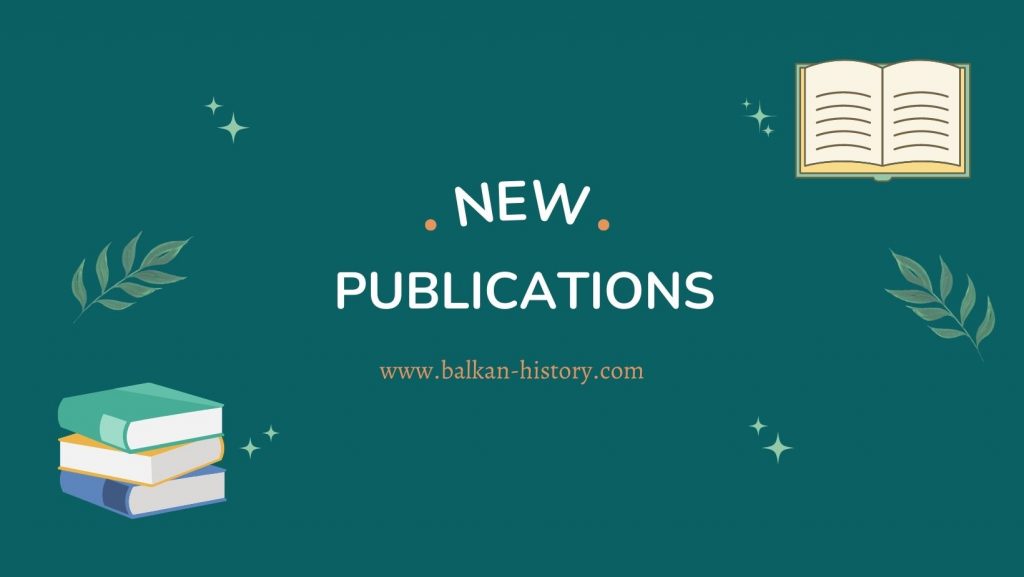This volume “Islamic Culture and Pre-Islamic Beliefs in Central Asia” published by Lexington in September 2024, which is a project initiated by the Balkan History Association, focuses on Islamic culture, traditions, and pre-Islamic beliefs in Central Asia. The chapters emphasize the importance of religious life, the significance of certain “sacred places,” and their role in the socio-spiritual life. The volume includes research spanning a period from antiquity to the Post-Soviet era to explore how landscapes of religious places and practices were interpreted and reinterpreted through time. Two of the three editors (Mihai Dragnea and Dorina Dragnea) and two authors (Venera Mustafayeva and Dareg Zabarah-Chulak) are members of the Association.
This volume promotes the history and culture of Central Asia among the Balkan academics. It aims to contribute to a better understanding of the religious life, very important for the people in Central Asian states, as well as political and social issues in the region, with a focus on Islamic culture, traditions, and pre-Islamic beliefs. It also seeks to increase scientific and educational collaborations between the public and private institutions and organizations in the Balkans, and those of Uzbekistan, Kazakhstan, Kyrgyzstan, Turkmenistan, and Tajikistan.
Table of Contents
Acknowledgments
Introduction: The Religious Landscapes of Central Asia throughout History, Mihai Dragnea, Dorina Dragnea, Antonio Alonso Marcos, and Elissa Bullion
Soviet Religious Legislation
Chapter 1: Communist Atheism Overrides Islam: The Soviet Movement for Religious Control in Central Asia (1930s-1960s), Rui Kai Xue
Chapter 2: Interpretation of the “Soviet Past” in Historical Policy Newly Independent States of Central Asia, Viachaslau Menkouski
Chapter 3: Impact of Communal Identity on the Notion of States in Soviet Kyrgyzstan and Uzbekistan, Shambhavi Thite
Political Islam and Islamic Social and Cultural Reformation
Chapter 4: Hizb ut Tahrir (HT) in Central Asia Since 2000: A Political Party, a Terrorist Group or a Social Movement?, Antonio Alonso Marcos
Chapter 5: Islam in Central Asia: Why Jadidism is ‘Out’ and Why Salafism is ‘In’, Dareg Zabarah-Chulak
Pre-Islamic and Early Islamic Material Culture
Chapter 6: Ancient Religions and Beliefs: Pre-Islamic Cult Architecture of the Ancient States of Central Asia, Shoira Nurmukhamedova and Feruzjon Subkhonov
Chapter 7: Heads or Altars: An Analysis of Religious Culture in Early Islamic Numismatics, Jonathan Ouellet
Sacred Spaces and Religious Mobility
Chapter 8: Islamic Shrines and pilgrimage in Samarkand (1992-2022), Azim Malikov
Chapter 9: The Impact of the Seven Pir Shrines in the Bukhara Province on the Social-Spiritual Life of the Muslims in Uzbekistan, Fahri Türk and Dolunay Yusuf Baltürk
Language and Ethnic Identity
Chapter 10: The Semantic Analysis of Mythological Conceptual Units in Religious Discourse: A Case Study of the Karakalpak Language, Gulzira Kdirbaeva
Chapter 11: Beliefs of the Semi-Nomadic Turkic-speaking Ethnic Group in Iran, the Qashqais, Venera Mustafayeva
About the Contributors
Reviews
“This volume is an exciting addition to the scholarship of Central Asia. This region has provided the fulcrum between different peoples and cultures. This volume, for the first time in recent scholarship, tackles the complexity of these interactions, and in particular, the impact that beliefs had on this critical space in the ancient world. The chapters explore a range of issues from the ancient to the Soviet era and will be vital for scholars of the region.” — Tim Williams, PhD, Emeritus Professor of Silk Roads Archaeology, University College London
“This volume provides a thorough exploration of the multifaceted landscape of contemporary Central Asia. Delving into the social, cultural, linguistic, and political dimensions, the authors trace their roots from the Soviet era, through Islamic influences, and back to pre-Islamic times. With eleven meticulously crafted articles, appealing to scholars and enthusiasts keen on understanding the intricate formation of beliefs and ideologies in Central Asia and Iran, the book offers original and profound insights.” — Leila Rahimi Bahmany, PhD, Utrecht University


